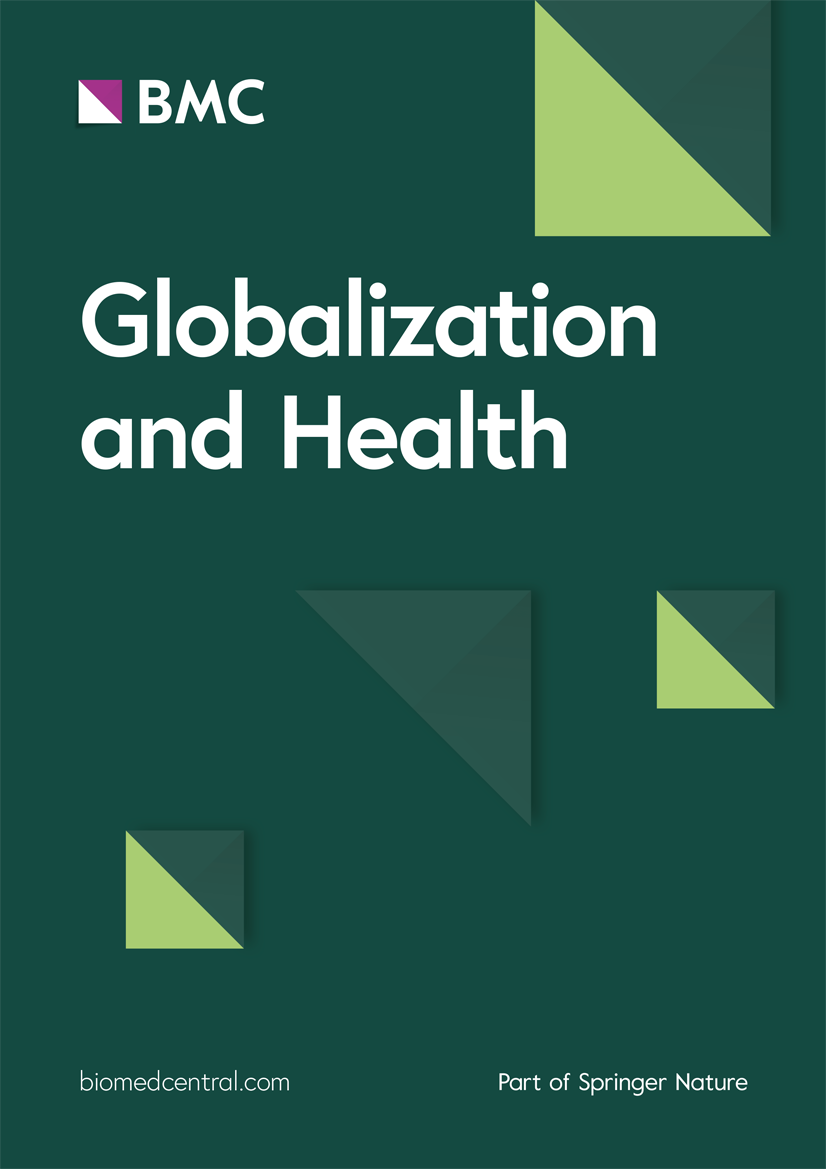How can the Sendai framework be implemented for disaster risk reduction and sustainable development? A qualitative study in Iran – Globalization and Health
How can the Sendai framework be implemented for disaster risk reduction and sustainable development? A qualitative ... Globalization and Health



The Strategy of Recognizing and Understanding the Risk of Disasters
Introduction
This report focuses on the strategy of recognizing and understanding the risk of disasters, which is a priority in achieving the Sustainable Development Goals (SDGs). It emphasizes the importance of identifying and assessing risks based on scientific methods and sharing this information among society and interest groups. The report highlights the need for a detailed initial assessment of existing risks and risks at local and national levels to enable effective disaster risk management.
Scientific Methods for Risk Assessment
Quantitative assessments provide a snapshot of risk, but decision-makers must look beyond risk description. Therefore, it is necessary to carry out a risk assessment using scientific methods and by experts. This ensures that judgments are based on a scientific basis, reducing the possibility of errors in decisions.
Steps to Improve Disaster Risk Understanding
To improve disaster risk understanding, several necessary steps should be taken. These include enhancing the political will to understand risk in society, increasing the budget for risk understanding, conducting detailed and scientific assessments of various risks in different regions, planning based on existing risks, using scientific evidence to improve society’s understanding of risk, and developing policies and laws related to risk perception. It is important to shift focus from preparedness and response to more sustainable approaches such as mitigation and recovery.
Importance of Information Infrastructure
Establishing or developing information infrastructures and using new technologies such as IT is beneficial in disaster risk management. When risk monitoring and data analysis are done by experts and shared among different layers of society, decisions can be made based on a scientific basis. This requires an integrated system that provides timely information to relevant people, enabling effective management of time and resources in disaster management.
The Role of Culture in Risk Perception
Culture plays a significant role in risk perception and disaster risk management. National and organizational cultures influence people’s behavior toward risks. Changing culture is crucial to changing risk-averse societies and promoting risk reduction measures.
Conclusion
The findings of various studies confirm the importance of recognizing and understanding the risk of disasters. By relying on scientific methods, sharing information, and implementing policies and laws related to risk perception, the understanding of disaster risks can be improved in developing countries. It is essential to integrate risk reduction programs into all sectors, strengthen risk governance, invest in disaster risk reduction, and promote disaster preparedness for effective response and recovery.
Strengthening Governance and Leadership for Disaster Risk Management
Introduction
This report focuses on the strategy to strengthen governance and leadership for effective disaster risk management, which is crucial for achieving the SDGs. It emphasizes the need for clear vision, plans, guidelines, inter-sectoral coordination, and stakeholder participation to strengthen risk governance and promote sustainable development.
Efficiency in Governance and Policy Implementation
Parallel structures at the national level can lead to inefficiency in governance and policy implementation. Developing horizontal structures in disaster risk reduction programs and adapting them to regional risks can prevent inefficiency. Merging similar organizations and assigning responsibility to one organization can be more effective.
Integration of Disaster Risk Reduction Programs
Disaster risk reduction programs should be integrated into all sectors, including national, regional, and local levels, to strengthen risk governance. Regulations and public policies should include the roles and duties of the public and private sectors. This integration enables effective coordination, organizational structures, and the implementation of risk management programs.
Role of Local Governments in Disaster Risk Reduction
Local governments play a vital role in planning regional development, improving the safety of schools and communities, and promoting community-based support networks. Strengthening disaster risk governance requires special attention to local governments and their capacity to manage risks.
Importance of Stakeholder Engagement
The identification and analysis of stakeholders are essential to promote risk governance. Different stakeholders from national, local, and community levels are involved in disaster response. When other stakeholders support a particular program, it increases its acceptability and effectiveness.
Conclusion
Strengthening governance and leadership for disaster risk management is crucial for effective risk reduction. Integrating disaster risk reduction programs, engaging stakeholders, and empowering local governments are key strategies to promote risk governance. By implementing these strategies, risk reduction measures can be effectively implemented, leading to sustainable development.
Investing in Disaster Risk Reduction to Build Resilience
Introduction
This report focuses on the strategy of investing in disaster risk reduction to build resilience, which is essential for achieving the SDGs. It emphasizes the need to attract investment in disaster risk reduction and highlights the importance of legal incentives, integrating risk reduction into construction programs, and increasing budget allocation for risk reduction measures.
Challenges in Disaster Risk Management
Transforming scientific concepts into government policies is a major challenge in disaster risk management. Avoiding complex language and encouraging flexibility in planning approaches can help overcome this challenge. Uncertainty in the future also requires flexible planning approaches that can be quickly modified based on changing circumstances.
Integration of Risk Reduction into Construction Programs
Integrating disaster risk reduction into construction programs, including building codes and retrofitting measures, is an effective method to invest in risk reduction. This ensures the safety of critical infrastructure and reduces the potential damage caused by disasters.
Importance of Budget Allocation and Insurance
Increasing budgets and credits for risk reduction measures and implementing compulsory insurance against regional disasters can strengthen risk governance. These measures ensure the security of investments and encourage industries to invest in disaster risk reduction.
Learning from Past Disasters
Learning from past disasters is crucial for improving preparedness and investing in risk reduction. By studying past incidents, identifying regional hazards, reviewing statistics of casualties and damages, and examining experiences from other countries, suitable models for risk reduction can be defined.
Conclusion
Investing in disaster risk reduction is essential for building resilience and achieving sustainable development. Legal incentives, integration of risk reduction into construction programs, budget allocation, and learning from past disasters are key strategies to attract investment and promote risk reduction measures.
Promoting Disaster Preparedness for Effective Response and Recovery
Introduction
This report focuses on the strategy to promote disaster preparedness for effective response and recovery, which is crucial for achieving the SDGs. It emphasizes the importance of strengthening disaster preparedness, using predictive models, integrating risk reduction into preparedness, and ensuring improved response capacity and effective recovery.
Retrofitting Critical Infrastructures
SDGs, Targets, and Indicators
| SDGs | Targets | Indicators |
|---|---|---|
SDG 1: No Poverty |
1.5 By 2030, build the resilience of the poor and those in vulnerable situations and reduce their exposure and vulnerability to climate-related extreme events and other economic, social and environmental shocks and disasters. | – Number of people in poverty who have access to disaster risk reduction strategies – Number of vulnerable populations with improved resilience to disasters |
SDG 2: Zero Hunger |
2.4 By 2030, ensure sustainable food production systems and implement resilient agricultural practices that increase productivity and production, that help maintain ecosystems, that strengthen capacity for adaptation to climate change, extreme weather, drought, flooding and other disasters and that progressively improve land and soil quality. | – Adoption of resilient agricultural practices in disaster-prone areas – Increase in agricultural productivity and production in disaster-prone areas |
SDG 3: Good Health and Well-being |
3.d Strengthen the capacity of all countries, in particular developing countries, for early warning, risk reduction and management of national and global health risks. | – Number of countries with strengthened capacity for early warning and risk reduction in health emergencies |
SDG 4: Quality Education |
4.7 By 2030, ensure that all learners acquire the knowledge and skills needed to promote sustainable development, including, among others, through education for sustainable development and sustainable lifestyles, human rights, gender equality, promotion of a culture of peace and non-violence, global citizenship and appreciation of cultural diversity and of culture’s contribution to sustainable development. | – Integration of disaster risk reduction and sustainable development concepts into education curricula |
SDG 5: Gender Equality |
5.b Enhance the use of enabling technology, in particular information and communications technology, to promote the empowerment of women. | – Proportion of women with access to and use of information and communications technology |
SDG 6: Clean Water and Sanitation |
6.5 By 2030, implement integrated water resources management at all levels, including through transboundary cooperation as appropriate. | – Number of countries implementing integrated water resources management plans |
SDG 7: Affordable and Clean Energy |
7.1 By 2030, ensure universal access to affordable, reliable and modern energy services. | – Proportion of population with access to affordable and reliable energy services |
SDG 8: Decent Work and Economic Growth |
8.5 By 2030, achieve full and productive employment and decent work for all women and men, including for young people and persons with disabilities, and equal pay for work of equal value. | – Proportion of population with access to decent work and equal pay |
SDG 9: Industry, Innovation and Infrastructure |
9.1 Develop quality, reliable, sustainable and resilient infrastructure, including regional and transborder infrastructure, to support economic development and human well-being, with a focus on affordable and equitable access for all. | – Investment in infrastructure for disaster risk reduction and resilience |
SDG 10: Reduced Inequalities |
10.4 Adopt policies, especially fiscal, wage and social protection policies, and progressively achieve greater equality. | – Proportion of population covered by social protection systems |
SDG 11: Sustainable Cities and Communities |
11.5 By 2030, significantly reduce the number of deaths and the number of people affected and substantially decrease the direct economic losses relative to global gross domestic product caused by disasters, including water-related disasters, with a focus on protecting the poor and people in vulnerable situations. | – Number of deaths and economic losses caused by disasters – Proportion of population in vulnerable situations with access to disaster risk reduction measures |
SDG 13: Climate Action |
13.1 Strengthen resilience and adaptive capacity to climate-related hazards and natural disasters in all countries. | – Number of countries with strengthened resilience and adaptive capacity to climate-related hazards and natural disasters |
SDG 16: Peace, Justice and Strong Institutions |
16.7 Ensure responsive, inclusive, participatory and representative decision-making at all levels. | – Proportion of population with access to participatory decision-making processes |
SDG 17: Partnerships for the Goals |
17.17 Encourage and promote effective public, public-private and civil society partnerships, building on the experience and resourcing strategies of partnerships. | – Number of partnerships for disaster risk reduction and sustainable development |
Behold! This splendid article springs forth from the wellspring of knowledge, shaped by a wondrous proprietary AI technology that delved into a vast ocean of data, illuminating the path towards the Sustainable Development Goals. Remember that all rights are reserved by SDG Investors LLC, empowering us to champion progress together.
Source: globalizationandhealth.biomedcentral.com

Join us, as fellow seekers of change, on a transformative journey at https://sdgtalks.ai/welcome, where you can become a member and actively contribute to shaping a brighter future.







